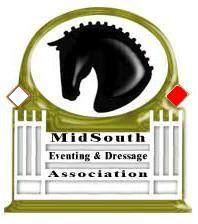By Sarah E Coleman
We all know one: A blanket-busting horse that seems to delight in ruining even the toughest-denier cover-up money can buy. Inevitably, these horses seem to destroy their blankets right before a holiday, major weather event or when their other blanket of the same weight is out for laundering.

Even though we’ve been lucky so far this winter, with our horses going without heavyweight blankets for many months past normal, there’s still plenty of time for your beast to beat up his clothes. If he decides now is a good time to put air conditioning in his blanket or rip off straps and buckles, here are some quick ways to keep your kid comfortably covered until you can get his blankets to a professional.
Unfortunately, your blanket needs to be as clean as possible to make the repair—usually a tough thing as Kentucky winters don’t really lend themselves to clean horse clothes. If the body of the blanket is torn, and you’re worried that washing it completely may cause the fill to fall out, spot washing near the repair is A-OK. The most important this is to ensure that at least the edges of where you will repair, in addition to a few inches on either side, are clean. While you could soak the blanket and clean it with soap and water, cleaning it with rubbing alcohol and letting it dry will work just fine.
Addressing the Broken Bits
Broken straps, chest, belly or leg, are the most difficult to repair without professional help. If your horse was able to break these straps that were professionally put on, it’s likely that he’ll blow through most repairs you are likely to make, as well, but don’t let that discourage you from trying!
Most home sewing machines don’t have the oomph to get through both the blanket’s fill and the strap to hold the straps on securely. In addition, some horses manage to destroy the almost the entire length of a belly strap, leaving you very little to work with!
If your horse has destroyed his belly straps, an elastic blanket surcingle can be used behind the withers to hold the blanket in place until you can properly repair it. If you happen to have an older blanket on hand, you can try cobbling together a new strap, sewing the new piece onto the old and sewing a new hook onto the body of the blanket for a fastener.
With any blanket repair, you’ll want to use the heaviest thread you can. If you’re in a pinch and don’t have heavy thread on hand, try using braiding thread, dental floss or fishing line. While a large, blunt needle may be easier to wield, working it through all the layers of fabrics and straps is tough.
If your horse has frayed the elastic and lost a T-strap, you can either use a sewing machine or hand-stitch the elastic around a new piece of hardware.
Though smaller, leg straps can be a bit harder of a repair as they require stitching through additional layers of fabric. A heavy-duty sewing machine is usually necessary to fasten the hooks securely to the body of the blanket. If you do try to reattach the straps, consider using leather or heavy canvas as a backing to make the repair less prone to re-tearing.
If you can’t seem to get the leg strap to stay even with a repair, you can tighten the remaining strap as much as possible between his hind legs or you can use baling twine as a tail cord to try to keep his clothes in place until they can be professionally repaired.
.jpg)
Your Horse May Look Homeless … But At Least He’ll Be Dry
Horse can be such stinkers; even if he’s top-dog in his field, it seems like a given that he’ll find some nail or other sharp object on which to tear his (usually new and/or very expensive) blanket.
Large rips and small holes in the body of the blanket can be the easiest to repair. If your blanket is made of polyester, consider using a lighter to (carefully) seal the hole. Though it may smell horrible, this usually works for smaller tears.
For blankets made of other materials, try making a woven duct-tape patch to hold the tear together (like the lattice weave you do for the bottom of a hoof pack). A blanket-specific waterproof patch is also easy to apply, as is an iron-on jean patch from a craft store. Simply trim the patch to a size slightly larger than the tear, iron on and let cool completely before putting it back on your horse.
Super glue is also an option to repair tears and small holes; just be sure to allow the glue to dry completely before testing its strength.
No matter what repair you make, waterproofing the repair is never a bad idea. Spray-on waterproofing is the easiest and quickest to use—just double-check that the type of waterproofing you purchase is useable on your blanket’s material. Also, be sure to check what temperature is recommended to get the best effects of the waterproofing; if it recommends over 50 degrees F, you may need to take the blanket into a garage or other climate-controlled area for best results.
Even if you’re not a super-savvy seamstress, sewing is best for large tears. Remember that the repair need not be beautiful—it just has to be functional. A straight or zip zag stitch is easiest, and hand sewing is always an option.
When to Cry Uncle
Finally, if your horse is ripped from stem to stern, it may be time to call it quits. If you do choose to trash your blanket, be sure to cut off all the hardware (including leg or belly straps, if they’re salvageable) and save them for later use.

